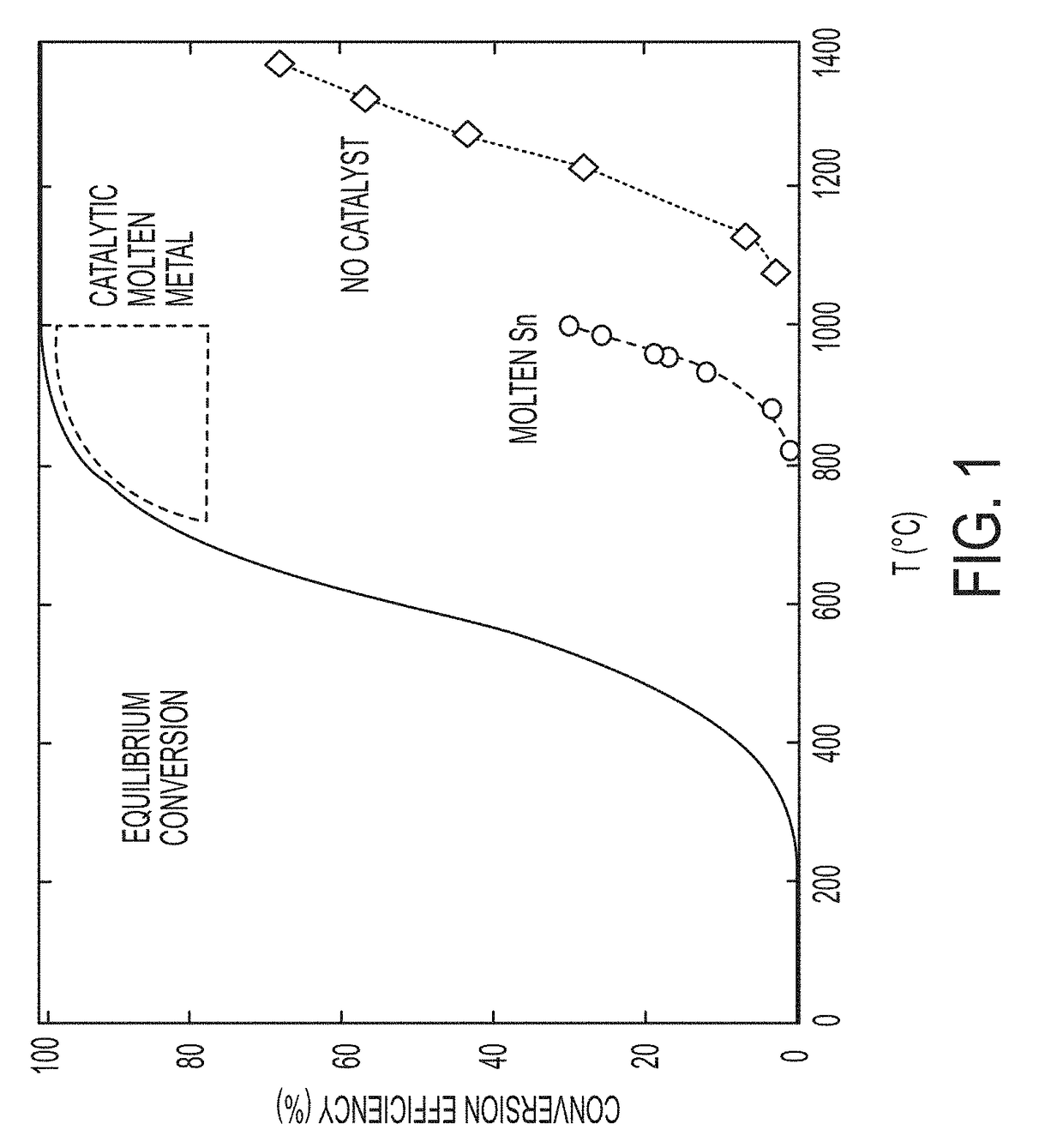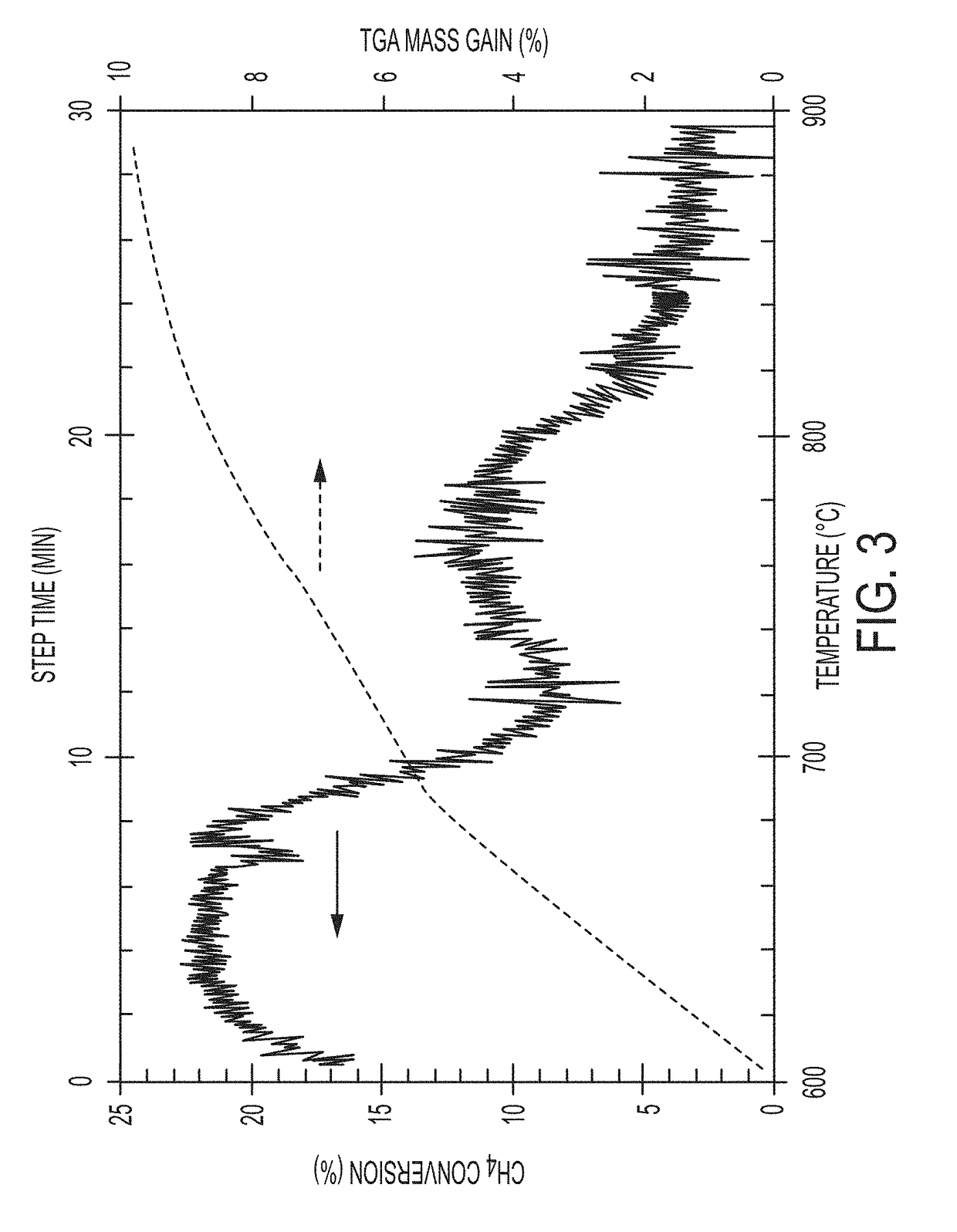System and method for pyrolysis using a liquid metal catalyst
pyrolysis technology, applied in the field of system and method for pyrolysis using a liquid metal catalyst, can solve the problems that the state of the art carbon-neutral hsub>2 /sub>production technology that is available today remains uneconomical, and the emission-free, energy-efficient, low-cost production technology is not available. to achieve the effect of optimizing the bubble surface area
- Summary
- Abstract
- Description
- Claims
- Application Information
AI Technical Summary
Benefits of technology
Problems solved by technology
Method used
Image
Examples
examples
[0106]Differential scanning calorimetry (DSC) experiments were performed to determine the phase diagram of the Ni—Ga phase space, and demonstrate a eutectic alloy composition with a melting point of −30° C. Methane decomposition experiments were performed in a TGA using 1% methane feed to assess process feasibility by decomposing methane in the presence of the molten metal catalyst in a thermo-gravimetric analyzer, and demonstrate a maximum conversion of 22% at 635° C. corresponding to the amount of hydrocarbon that was converted to a mixture of solid carbon and gaseous hydrogen when the liquid metal was used to catalyze the decomposition of a diluted methane stream (1%). The metal surface eventually gets covered with carbon (coked), but this is not expected to be a problem in the proposed reactor design. SEM micrographs of the final product indicate that the carbon product readily separates from the molten metal and is observed as a floating slag. The carbon phase appears to primar...
PUM
| Property | Measurement | Unit |
|---|---|---|
| temperature | aaaaa | aaaaa |
| diameter | aaaaa | aaaaa |
| temperatures | aaaaa | aaaaa |
Abstract
Description
Claims
Application Information
 Login to View More
Login to View More - R&D
- Intellectual Property
- Life Sciences
- Materials
- Tech Scout
- Unparalleled Data Quality
- Higher Quality Content
- 60% Fewer Hallucinations
Browse by: Latest US Patents, China's latest patents, Technical Efficacy Thesaurus, Application Domain, Technology Topic, Popular Technical Reports.
© 2025 PatSnap. All rights reserved.Legal|Privacy policy|Modern Slavery Act Transparency Statement|Sitemap|About US| Contact US: help@patsnap.com



